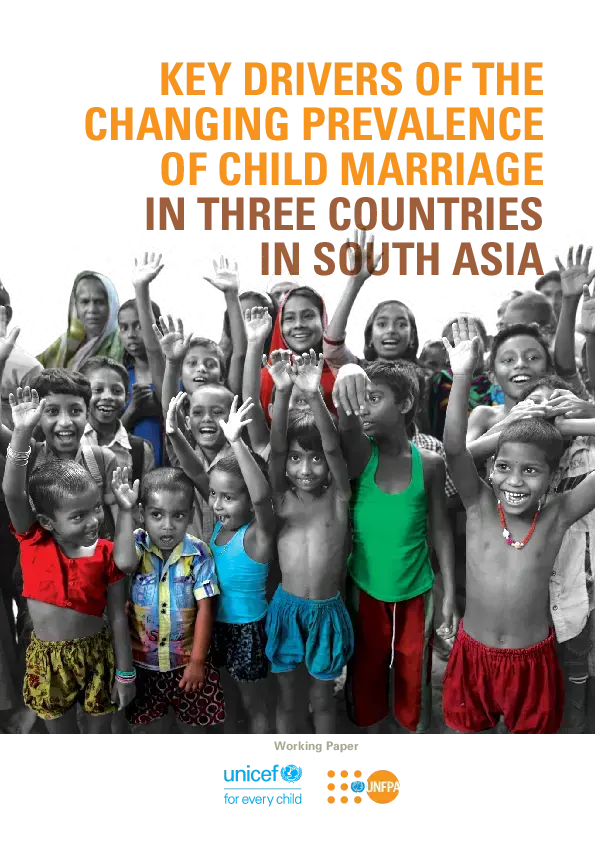This study provides empirical evidence on the cross-sectional and temporal effects of micro-level and macro-level factors on child marriage in three South Asian countries, namely Bangladesh, Nepal and Pakistan. While micro-level effects on child marriage are extensively documented, the effects of macro-level drivers remain an open area of inquiry. To the extent that child marriage leads to limited opportunities and violation of basic human rights, this research seeks primarily to investigate those macro-level circumstances that are most effective in reducing the prevalence of child marriage in selected contexts. This study defines child marriage as a legal or customary union between two individuals, of whom one or both parties are younger than 18 years of age.
What we do
Key drivers of the changing prevalence of child marriage in three countries in South Asia

Publisher
Number of pages
88
Author
UNFPA & UNICEF
Publication
Key drivers of the changing prevalence of child marriage in three countries in South Asia
Publication date
01 August 2018




